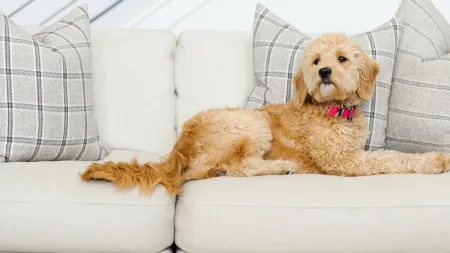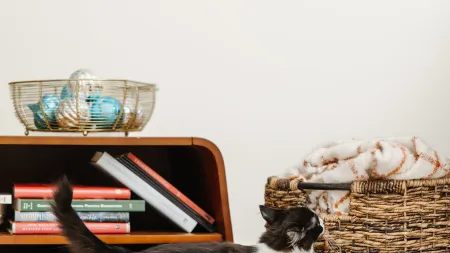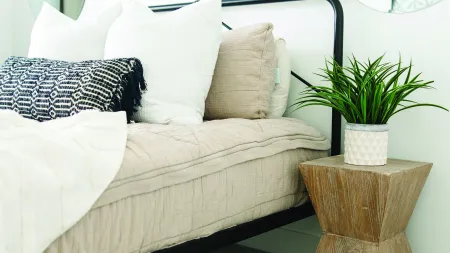How to Apply Spray on Carpet Protector & Make It Last Longer
Carpets get soiled daily, and some stains may be stubborn, making them expensive to remove. A spray-on carpet protector such as Premium Fiber Protector by Zerorez® safeguards your carpet (rugs and upholstery) from stains and spills, making it possible to keep it clean for a longer time.
Clean your carpet thoroughly and allow it to dry before applying a carpet protector.
Prepare, shake, and test the suitability and effectiveness of the carpet protector before spraying it on the carpet.
We will share tips on applying a carpet protector correctly and discuss the dos and don'ts after application. Read on.
What Are the Different Types of Carpet Protectors?
There are three types of carpet protectors:
Hybrids: These are a combination of dry blockers and repellents. You can use them on any carpet fiber. Hybrid protectors may not be the best because they contain 50% repellents and 50% dry blockers, making them less effective than 100% dry blockers or 100% repellents (based on you).
Dye blockers: Most nylon and wool carpet protector sprays have dye blockers. They don't repel oil or water; they protect your carpet by filling the dye sites on fibers such as wool and nylon with an invisible anionic polymer. When you use a dye blocker on a carpet, liquid spills won't bead on the fibers; they fall through. You can use a microfiber cloth to blot the spill without staining the carpet. Maxim S.O.S. is an example of a dye blocker.
Repellents: DuPont Advanced Carpet Protector and Teflon carpet protector spray are examples of repellents. Repellents prevent sand, water, and oil from penetrating the carpet fibers. They lower carpet fiber surface energy. These protectors are great for Olefin, Polyester, Triexta, and other oil-loving carpet fibers. Pressure and heat lower the effectiveness of repellent carpet protectors.
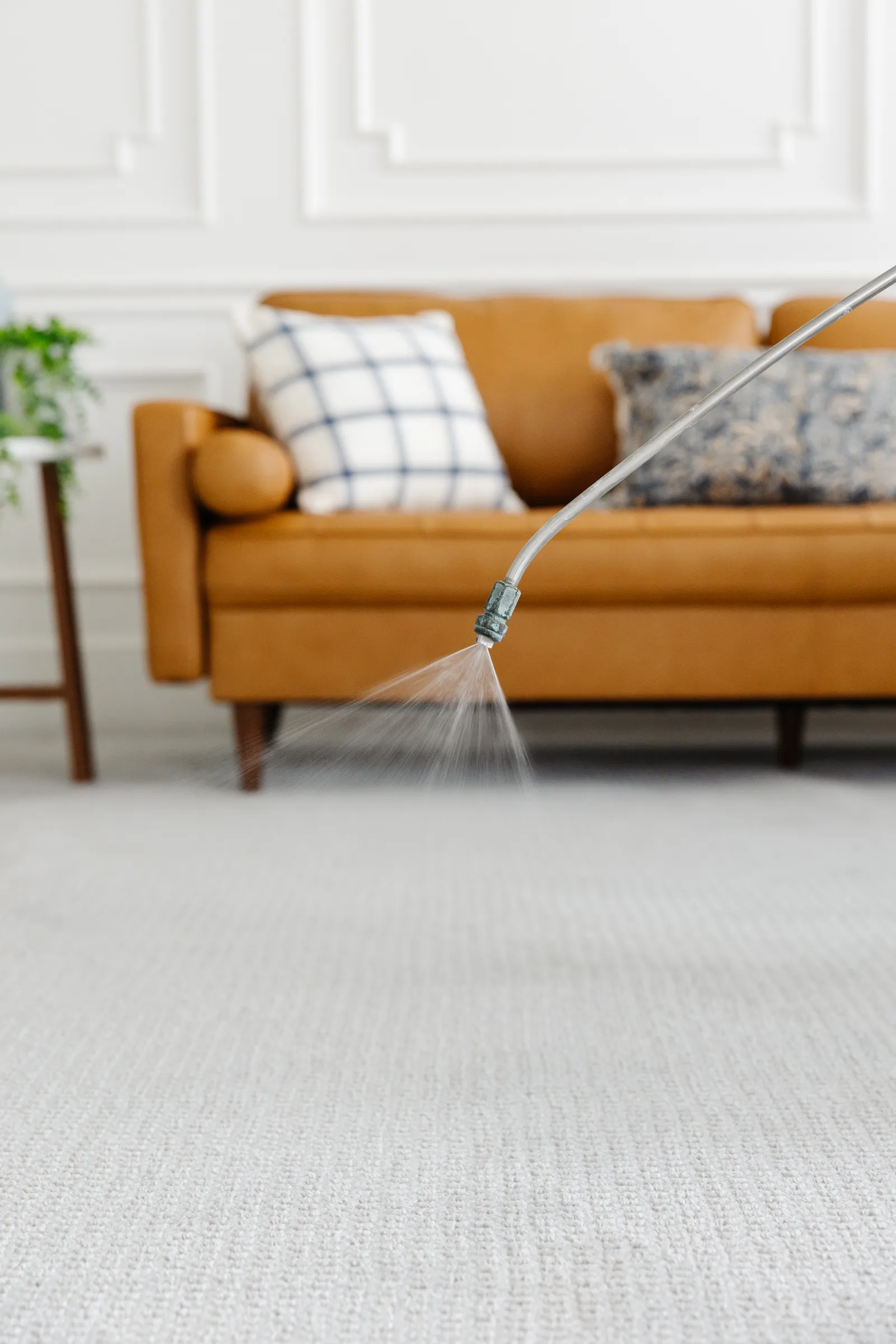
Spray on Carpet Protector
Carpet protectors soak into every fiber, creating an invisible hydrophobic coating. The coating doesn't change the feel or look of your carpet, but it repels liquid and oil-based stains, preventing them from penetrating the carpet fibers.
You only need to wipe away spills, oil stains, and dirt because they stay on the surface of the carpet fibers, not soaking.
Spray-on carpet protectors can be used on rugs, staircase carpeting, high-traffic areas, auto mats, and flooring, among other carpets and rugs.
Most carpet protectors work well on natural fabrics such as silk, linen, cotton, and wool and synthetic fabrics such as nylon, rayon, polyester, acrylic, and olefin. They can also be used on other materials such as canvas, velvet, and microfiber.
Before applying the protector, there are a few things to do:
- Check the label to ensure the protector is ideal for your carpet type.
- Remove the furniture (where applicable)
- Vacuum the carpet
- Thoroughly clean the carpet if it's not new.
- Allow the carpet to dry completely (some manufacturers recommend applying the protector on a damp carpet; check the label to be sure).
Below are the steps to follow to apply the protector on your carpet.
Step 1: Test the Protector
Test the protector's effectiveness by spraying a small amount on a small, hard-to-see (hidden) area. Some carpet dyes are not colorfast and could be ruined. Test their colorfastness before applying the protector to the entire carpet.
If you notice carpet discoloration, don't use the carpet protector spray. It will damage the carpet. If the color doesn't rub off when you rub the area with a white absorbent cloth, proceed.
Step 2: Apply the Protector
- Hold the product can upside down, 61 cm (2 ft) above your carpet.
- Firmly push down the button at the bottom (sometimes at the top) of the can and use a sweeping motion to apply the protector. Based on the brand, you may see a white foam or a clear carpet protector when spraying.
- Spray a light layer of the protector evenly on the carpet's surface, starting from one end to the other.
- For a non-solvent protector to work effectively, use a clean brush or carpet rake to help them penetrate the carpet fibers.
When the protector penetrates the carpet fibers, it lasts longer and enhances color brightness, keeping the carpet clean longer.
Avoid over-spray by protecting the non-fabric materials surrounding the carpet. Wipe immediately if an overspray occurs.
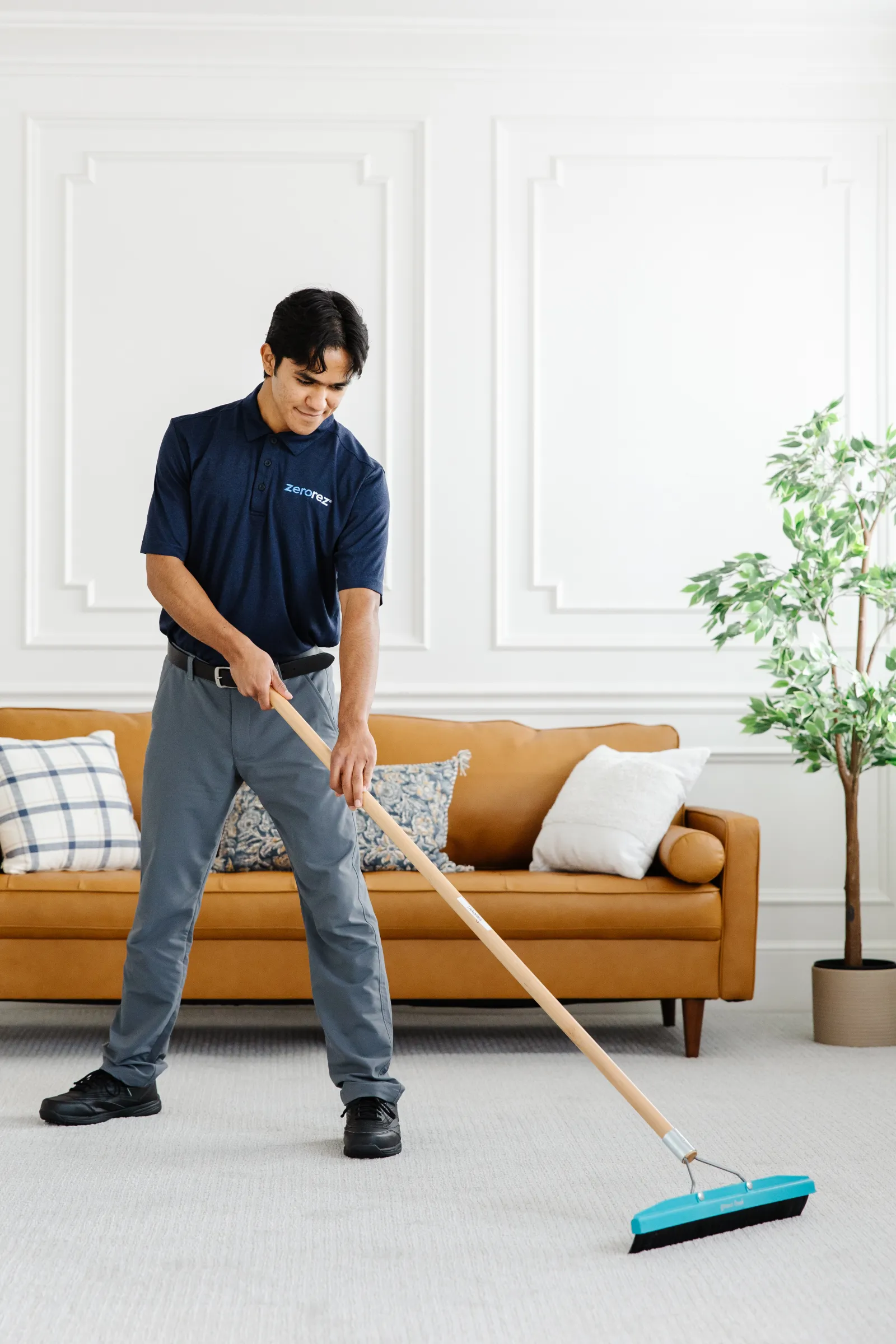
Step 3: Let the Carpet Dry
Based on your carpet type and the amount of carpet protector you use, it may take at least 2 to 12 hours before the carpet is completely dry. Allow more time (sometimes up to 24 hours) if the temperatures are below 18°C. You should restrict kids, pets, and everyone else from accessing the room where the carpet is until it's dry. You can also apply it in the evening to dry overnight while everyone is asleep. Just like you must wait for your carpet to dry after cleaning it, wait until the protector is dry before walking on it.
Properly ventilate the room to allow fresh air to help the carpet protector dry evenly and quickly. You may also turn on the fans.
How to Maintain Carpet Protector
Applying a carpet protector is not a warrant to neglect your carpet or ignore debris, stains, or spills. Continue with routine vacuuming to keep the carpet clean and odorless. Here are a few things you should continue doing.
1. Vacuum Clean
Spot clean the carpet if you see dirt or debris. Regularly vacuum clean it entirely to remove dirt accumulation or foul smells.
2. Wipe Spills Immediately
If you have applied a carpet protector, spills will bead on carpet fibers instead of getting soaked. Once spills occur, dab them away using a clean towel or microfiber cloth.
3. Reapply the Carpet Protector
Moving furniture regularly and heavy foot traffic weaken carpet protectors. Based on your home's foot traffic and furniture rearrangement schedule, reapply the carpet protector as needed.
Most manufacturers recommend reapplying carpet protectors every six months for low-traffic areas and every three months for high-traffic areas. After the recommended time elapses, the protector weakens. We highly recommend reapplying fiber protector after a deep (or professional) carpet cleaning even though the recommended time has not elapsed, and we recommend having us professionally apply our premium fiber protector as it lasts longer than store-bought sprays.
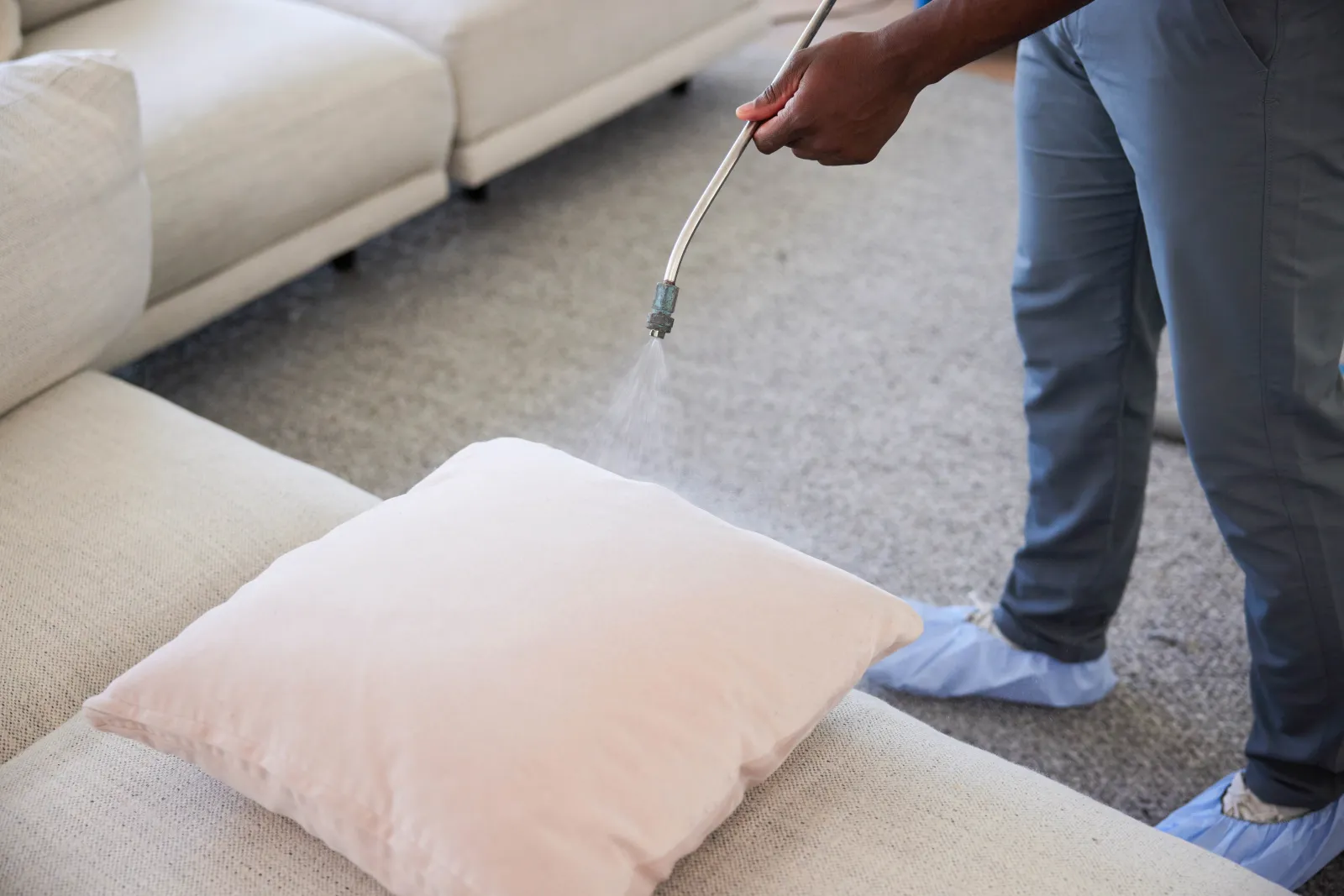
Factors to Consider When Buying a Carpet Protector
As discussed below, there are various factors to consider when choosing the right protector for your carpet.
- Longevity: Based on your needs, consider the longevity of the product. Some last only 3 to 6 months, while others last 2 to 3 years. The longer the protector lasts, the higher its cost.
- Safety: Buy odorless, non-toxic protectors to ensure your family's health is safe. Avoid carpet protectors containing harmful nanoparticles or Perfluorooctanoic acid (PFOA).
- Application: To protect your upholstery from spills, dirt, and dust, buy a multi-use protector that can be used on carpets and upholstery.
- Effectiveness: Choose a strong carpet protector that can resist soiling, water, and other liquid spills. Don't settle for less.
How Long Does a Carpet Protector Last?
It depends on the brand and how well you applied it. Some can last 3 to 6 months, and others 3 years or more (like those sold and applied by professional carpet cleaning companies). Factors such as the frequency of spillages, furniture rearrangement schedule, and foot traffic affect the durability of carpet protectors.
The higher the traffic, frequency of spills on the carpet, and furniture movement, the shorter the protector lasts.
Does Carpet Protector Really Work?
Yes, carpet protectors work! According to Zerorez's experts, carpet protectors are a shield between soil, spots, spills, and clean carpet fibers.
Expert's Tips:
- Cleaning the carpet doesn't always remove the protector, meaning you might not always have to reapply it after carpet cleaning, but we do recommend it after deep, professional carpet cleaning or at least every other year.
- Use a clean brush or carpet rake to apply non-solvent sprayers for best results.
- Don't use a spray container that has been used to apply other products, such as a deodorizer or detergent, as that could weaken it.
- Excessive use of a carpet protector results in a powder or stiffening residue; vacuum to remove it.
- Modern carpets have a carpet protector agent added when they are made in the factory. When buying a new carpet, ask the manufacturer if the carpet has added any protector agent. If so, wait until two years (or as the manufacturer recommends) before reapplication.
Work With the Best: Zerorez!
Have you had your carpet or upholstery cleaned lately? We can help you clean and apply Premium Fiber Protector to keep them clean longer. Our past customers are happy; their reviews confirm that we're the best carpet cleaning company in the U.S.!
Schedule a service online now or call us at 866-937-6739.
